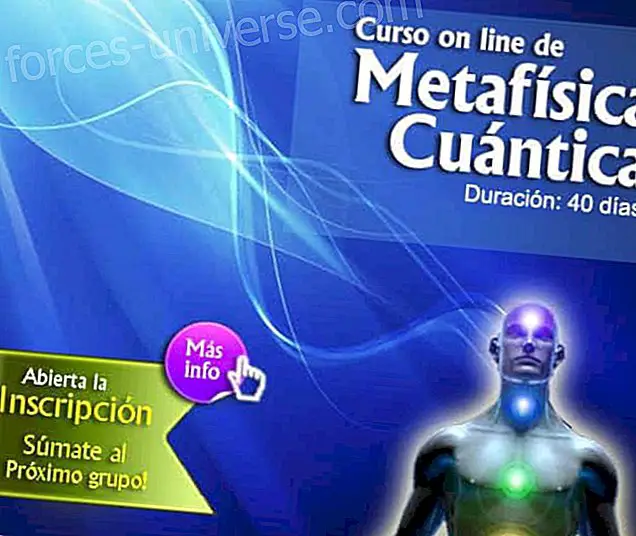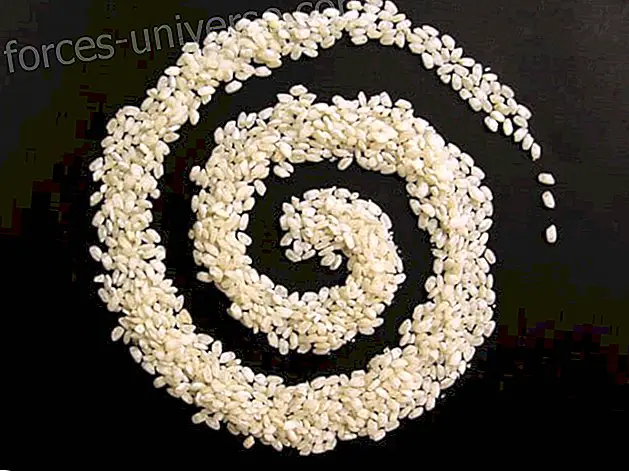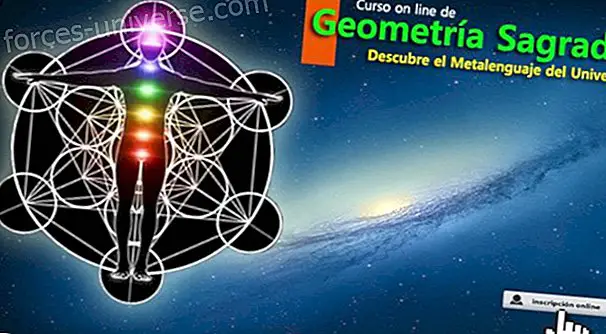
The cloisters of the cathedral of Girona and the monasteries of Sant Cugat and Ripoll enclose an encrypted message in their columns, a musical, Pythagorean and mathematical message that began to be unveiled by the German musicologist Marius Schneider. Knowing its meaning causes temples to become true scores of stone.
Josep Pebble
During the Middle Ages the orders of cavalry proliferated but also guilds and brotherhoods of artisans who contributed to the resurgence of medieval urban life. Freemasonry developed precisely from the masons' guilds (in French masons) that built the Gothic cathedrals of Europe. The freemasons would have inherited the esoteric knowledge of their pagan ancestors and incorporated it into the sacred architecture of the cathedrals.
Nothing is casual in a temple of these characteristics. The measures can contain specific messages and even words, as Monsignor Devoucoux found (see BEYOND 133) and, as if that were not enough, some symbols such as the spiral, the propeller or the pentacle (also called Seal of Solomon) are related to a disturbing mathematical equation expressed by Leonardo Fibonacci in the formula 1/2 (square root of 5 - 1). The Greeks called this relationship aurio sectio. It is easier to discover symbolic allegories in facades and capitals but, all too often, we realize that we have forgotten their true meaning. And to try to discover it was dedicated in the mid-forties a team of researchers from the Spanish Institute of Musicology, under the CSIC (Higher Council for Scientific Research). Its coordinator, the German musicologist and ethnographer Marius Schneider observed that the capitals of the cloisters of the cathedral of Girona and those of the monasteries of Sant Cugat del Vallés and Ripoll presented animals and symbols that were repeated with a certain frequency. It was not casual. They hid an encrypted message, a musical message.
A 13th-century Hindu treaty already established a relationship between musical notes and some animals. Was there a connection between both cultures?
The works of AK Coomaraswamy and E. Malê have cleared doubts about the influence of Hindu art and that of the Middle Ages, although there is no document in which identity signs are collected. The coincidence made us understand that ancient and common knowledge had inspired the stonecutters.
Encrypted music
Until the seventeenth century the correspondences between musical notes and animals, kinds of angels, stones or plants were not known. At that time Athanasius Kricher perpetuated his Musurgia Universali, a tradition related to the range of Greek music according to which each sound corresponds to an animal or a plant (see box).
During the investigation, Schneider warned that the animals of the Catalan Romanesque cloisters mentioned above maintained a rhythmic correlation with the numbers, the planets, the signs of the zodiac, the colors and the feelings, that is, they evoked Pythagorean thinking.
Pythagoras not only taught his disciples to cure diseases through sounds but also established an intimate relationship between the stars, colors and musical notes. This philosopher and mathematician found that the essence of the Universe was numbers and enabled the tuning of the western musical scale based on the octave, because a string divided in half would give the same sound exactly eight tones louder than a string twice as high as long. One of his secrets was that a fifth musical (five diatonic notes) should return to the original note eight octaves higher when repeated twelve times in an ascending sequence. But when he tried it, there was a difference of one eighth of a note ... so that the ascending scale was also a spiral ... Thanks to it he discovered the aforementioned "golden section" a proportion present in all manifestations of Nature and that, in addition, It was part of geometric figures, such as the pentacle and the dodecahedron that were considered sacred by their peers. For these and other reasons the pentagram became the secret password of the Pythagoreans.
His theory also states that the Universe is made up of numbers and that each one of those numbers has divine properties. These magical proportions of numbers appeared everywhere in Nature, including the sounds emitted by the planets in vibration as they travel through the void. "There is geometry in the humming of the strings, " Pythagoras wrote. There is music in space that separates the spheres. ”
Musical magic
In his book The musical origin of animals, symbols in ancient mythology and sculpture (Editorial Siruela), Schneider deduces that the three cloisters studied represent the passage of time and, by analogy, that of human life. The cloister of the monastery of Ripoll, for example, in addition to its musical content, its capitals tell us the story of a healing. The monks, to interpret the symbolism of the columns, roamed the aisles of the cloister in the opposite direction to the Sun, as in the exorcism rituals. Quite the opposite occurs in the cloisters of Sant Cugat and Girona, whose journey makes sense if we follow the movement of the star king through the sky.
The resemblance between the three cloisters is so evident that some of the animals that are carved in their columns seem to have left the same creative hand. There are three groups in them: Fantastic animals, mythological and conventional animals.
Today we know more or less what they represented - Schneider explains - but it is very difficult to guess what he once said singing his mouth. The images are mute - add - because they are made of an inert material. At present, he concludes, we have become accustomed to an art without resonance and we almost do not think about contemplating, for example, the genetic gargoyles, that the rain with its whisper made revive. that for that reason the silent voice of the cloister capitals, full of fabulous animals, of horrifying heads and open jaws, consequently, has little impact on the aesthetic consciousness of the modern spectator but, of course He only had it for the stonecutters on one side and for the monks on the other.
Today we know that music is capable of modifying our mood, it can empower our mind and, even some, assume that its sound is capable of modifying matter. This was well known by the ancient Egyptians who incorporated music into their magical rites to alter the course of Nature or treat certain diseases. The Greeks, on the other hand, had the conviction that music shaped the personality. Plato, for example, claimed that the influence of certain rhythms and melodies caused a beneficial state of mind that was not available by other means. All this knowledge was absorbed by medieval esotericism and taken to the cathedrals. The seven sounds of the scale also became a powerful key to introduce the initiated into the mysteries of magic and, as is logical, these approaches were encrypted in different arts such as architecture or architecture. painting.
The ox, the note mi and Saturn
Alberto Durero, for example, in his famous painting The Melancholy, shows an essential part of Pythagorean thinking when he paints a bell with clapper on a landscape with sea and rainbow in the background in which a tower. In it hang an hourglass, a scale, the bell described and a grid with numbers. On the tower rests a rough wooden staircase with 7 steps (just the notes of the pentagram) and, in the foreground, a thinking angel with a compass and an ox lying on the ground. According to the ancient mystical conceptions the bell with clapper is under the sign of Saturn: the mi, third sound of the earth element, is the place of the offering of a violent sacrifice, the expression of the pain and awareness of duty. Among its most pronounced symbols are the hammer and mace and an ox head.
Schneider warned that the ox, the animal of sacrifice, was used in Christian theology as a symbol of the passion of Christ and that in the ancient East it was represented with a geometric shape: the trapeze.
That is, curiously, the shape of the Gothic cloister of the cathedral of Girona and what led him to deduce that the notes contained in his capitals were a hymn to the Sorrowful Virgin.
The current basilica began to be built at the end of the 13th century on the site that had already been occupied by another Romanesque temple. We can admire its ship of 77 meters long and almost 23 meters wide, the delicacy of its triforium, the complexity of its ambulatory, its old polychrome stained glass windows. The altarpiece and the 11th-century embossed silver canopy that covers the altar with notable elements such as a Romanesque altar and, crowning two sections of a small staircase, the so-called Charlemagne chair, carved in marble.
Fifty-three sounds that make up the melody of the cloister, thirty-one of them facilitated by the capitals. The lion / bull sequence is one of the most frequent. In general, the lion symbolizes the victorious Sun, the fa sound corresponds to it. The ox / bull, meanwhile, represents the night, humility, sacrifice. His sound is me.
If Schneider is right every morning a whisper must be heard in the cloister, a magical melody, that of the symbols, capable of modifying the state of consciousness of those religious, of invoking the energies that the builders of the cathedrals amplified with their work coming from the bowels of the earth, a force capable of working inexplicable phenomena, of moving destinies, the force of vibration.
“Everything was born from the Word - says the German musicologist - and for ancient cultures, divine forces are sounds, therefore, the hidden essential rhythm is acoustic. If sound represents the first substance -continues- common to all beings and all things and that, developed by singing, is the vibrant force that moves the Cosmos, in the same way, singing would represent the only means of entering direct and substantial exchange relationship with the farthest powers. ”






